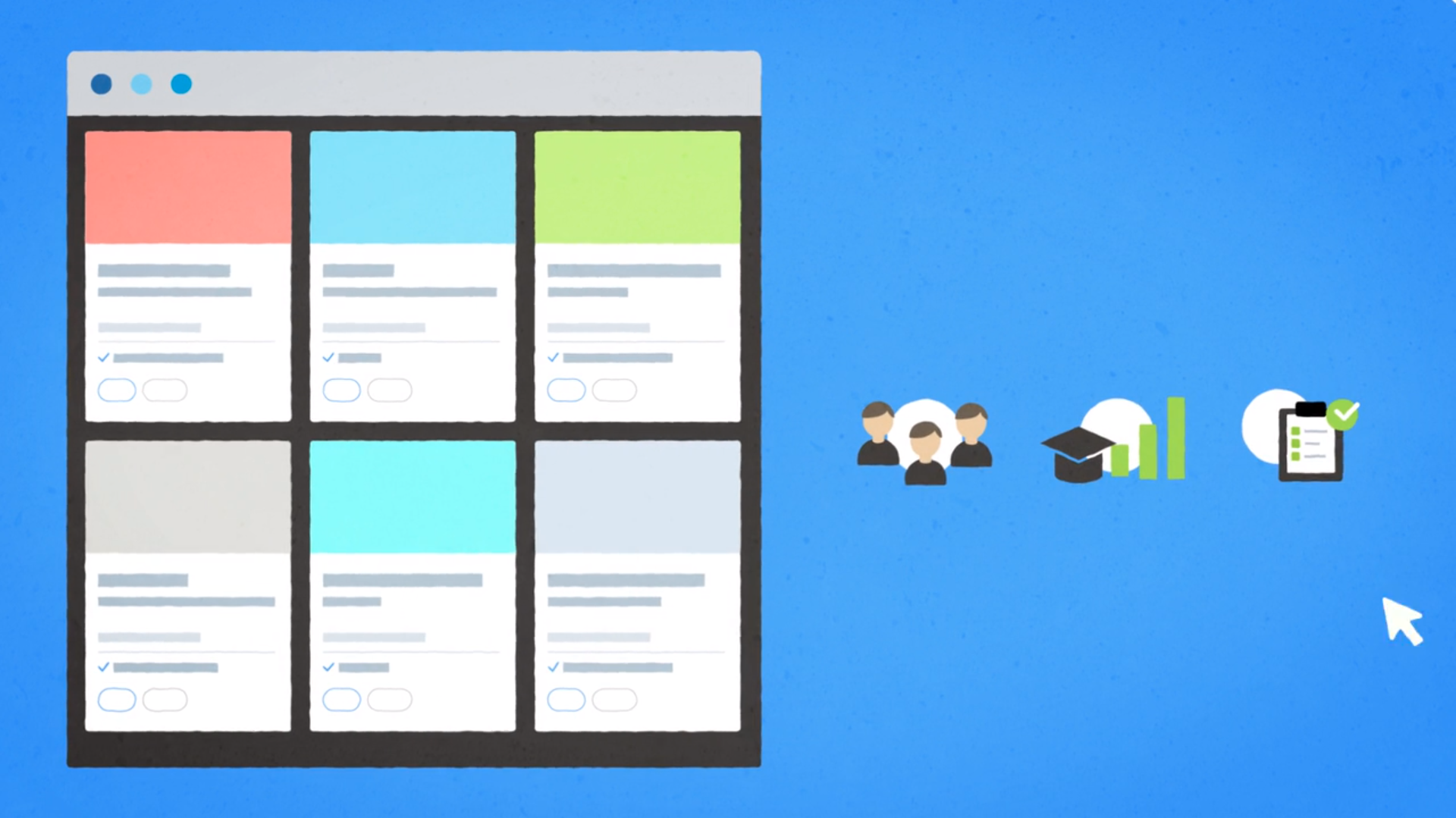How to Empower Learners with Asynchronous Training
Have you ever wondered why it is that the same people who may play video games for hours online might not be able to make it through a 60-minute webinar or online class without losing focus? It may come down to one simple element, according to legendary game designer and creator of the Civilization series, Sid Meier, who proposed that the indicator of a good game is that it offers, “A series of interesting decisions.”

With this adage in mind, what makes good online, asynchronous learning? If you create online training, pause a moment and reflect on this question: Are you giving your learners the opportunity to make choices?
Many educators and professionals working in the world of learning and development had not fully explored online learning before the COVID-19 pandemic. The tried-and-true method of in-person, synchronous education simply worked until public health risks quickly made it no longer feasible in early 2020.
Asynchronous online learning
Thankfully, online education offers numerous benefits over traditional face-to-face training, including:
- Eliminate scheduling rigidity: Simply put, online learning can happen any time, anywhere, and on any device. Classroom-based training provides learners with a single opportunity to engage, and if any number of factors prevent learners from attending class, the instruction can be difficult to make up. Online learning removes this tremendous obstacle and makes content available any time the learners are available.
- Create consistent experiences: Maybe one instructor is more experienced or knowledgeable than another. Maybe the instructor is absent or unavailable. Maybe the instructor is human and is simply having a bad day. Online learning removes these inconsistencies, so all students receive the same content, the same instruction, and the same experience in going through the class or program. Implementing online learning allows the designer to create the best possible presentation of the material and removes many of the variables that create the inconsistent experiences found in traditional training.
- Aggregate expertise from diverse sources: Even the best instructors have limits to their depth of knowledge. Online learning allows you to combine both the instructors’ expertise with content curated from infinite other sources. Whether you choose to include videos, links to content online, a discussion forum where students can learn from each other, or another creative approach, online learning tears down the four walls of the traditional classroom and encourages students to explore additional sources of information.
- Provide objective records of learning outcomes: From a simple, tactical standpoint, many administrative tasks are automated with online learning. Attendance, time spent “seated” in class, grade scoring and averaging, records of learners’ attempts and completion, and more, are built-in features of online learning programs. The hours saved on mundane administrative tasks provide educators the opportunity to do more of what they love: engaging with their students and teaching.
As schools and offices around the world closed in response to the global pandemic in early 2020, many professionals found themselves unsure of how to properly pivot into the online realm. Instead, they tried to maintain the synchronous schedule of classes and training they had previously offered. Platforms like Zoom allowed face-to-face conversations to continue; however, many educators struggled to maintain the momentum of their traditional classes. The phrase, “Zoom fatigue is real,” became commonplace, as explored by even the Harvard Business Review.
If you find yourself struggling with offering a high-quality learning experience with synchronous online education, you could attempt to combat Zoom fatigue with tactics that may likely still exhaust and inconvenience people. Instead of trying to learn, camera on, in front of an audience, while trying to keep their pets and family members out of sight during class, learners could benefit from a more effective alternative in asynchronous online education.
Synchronous online learning
Consider how synchronous online education presents the following drawbacks, making both educators and learners alike miss out on the main advantages of online learning:
- Requires a fixed time: As we previously discussed, requiring a fixed time may actually prove to be a hindrance to effective online learning. You may be able to dial in from your living room and wear your pajama pants to your Monday morning Zoom class, but that doesn’t solve the issue of requiring you to be online and camera-ready at a fixed day and time. When life gets in the way and learners are unavailable, they have now missed out on that day’s instruction.
- It is only as successful as the facilitator: Asynchronous online learning does not rely on the instructor’s technological prowess. An asynchronous course is available whether or not the instructor is online and present, and does not rely on the instructor performing many roles (such as monitoring the chat and helping students resolve their own technical issues) all while trying to deliver the content.
- Experts don’t need to be available at the same time: Asynchronous courses can offer video (whether created or curated for the course), text, photos, and any other media or assets available on the topic. Similar to how learners can access the content 24/7, instructors can contribute any time they are available, regardless of when the course is scheduled to occur. Simply put, coordinating time and schedules is no longer a barrier to learning.
- Leads to highly subjective assessments and evaluations: Synchronous online learning does not make use of the objective and time-saving features available in online learning. It also relies on many inaccurate subjective assessment methods that are problematic in traditional face-to-face instruction.
To return to the notion of offering your end users a series of interesting decisions, consider how asynchronous online learning offers students that most tantalizing of motivators: choice. With features that appeal to both educators and learners alike, asynchronous online learning creates an environment where information is available when learners are, experiences are consistent, and assessment is objective and fair. Asynchronous learning makes use of the features built into course authoring tools and learning management systems, and creates engaging experiences where learners can complete courses at their own pace, repeat as often as necessary, gain confidence by achieving learning outcomes, and produce a record of having done so.






